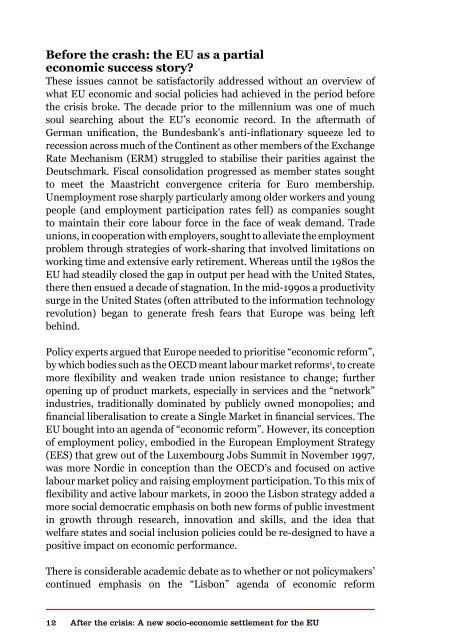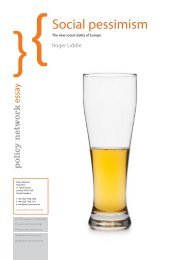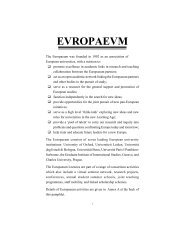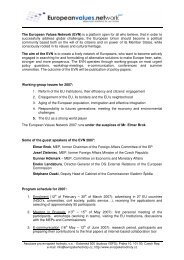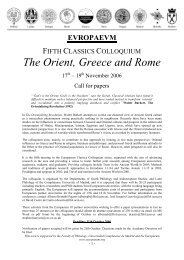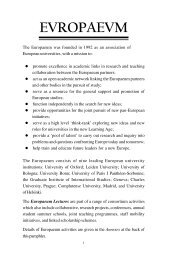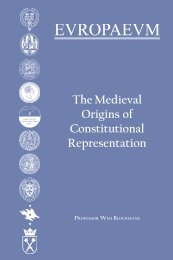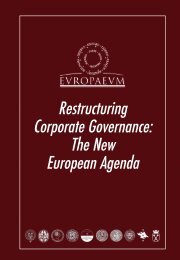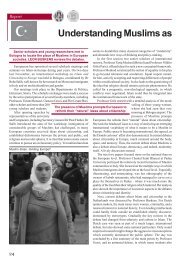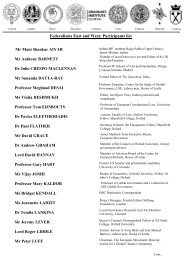Authors Iain Begg | Gabriel Glöckler | Anke Hassel ... - The Europaeum
Authors Iain Begg | Gabriel Glöckler | Anke Hassel ... - The Europaeum
Authors Iain Begg | Gabriel Glöckler | Anke Hassel ... - The Europaeum
Create successful ePaper yourself
Turn your PDF publications into a flip-book with our unique Google optimized e-Paper software.
Before the crash: the EU as a partial<br />
economic success story?<br />
<strong>The</strong>se issues cannot be satisfactorily addressed without an overview of<br />
what EU economic and social policies had achieved in the period before<br />
the crisis broke. <strong>The</strong> decade prior to the millennium was one of much<br />
soul searching about the EU’s economic record. In the aftermath of<br />
German unification, the Bundesbank’s anti-inflationary squeeze led to<br />
recession across much of the Continent as other members of the Exchange<br />
Rate Mechanism (ERM) struggled to stabilise their parities against the<br />
Deutschmark. Fiscal consolidation progressed as member states sought<br />
to meet the Maastricht convergence criteria for Euro membership.<br />
Unemployment rose sharply particularly among older workers and young<br />
people (and employment participation rates fell) as companies sought<br />
to maintain their core labour force in the face of weak demand. Trade<br />
unions, in cooperation with employers, sought to alleviate the employment<br />
problem through strategies of work-sharing that involved limitations on<br />
working time and extensive early retirement. Whereas until the 1980s the<br />
EU had steadily closed the gap in output per head with the United States,<br />
there then ensued a decade of stagnation. In the mid-1990s a productivity<br />
surge in the United States (often attributed to the information technology<br />
revolution) began to generate fresh fears that Europe was being left<br />
behind.<br />
Policy experts argued that Europe needed to prioritise “economic reform”,<br />
by which bodies such as the OECD meant labour market reforms 1 , to create<br />
more flexibility and weaken trade union resistance to change; further<br />
opening up of product markets, especially in services and the “network”<br />
industries, traditionally dominated by publicly owned monopolies; and<br />
financial liberalisation to create a Single Market in financial services. <strong>The</strong><br />
EU bought into an agenda of “economic reform”. However, its conception<br />
of employment policy, embodied in the European Employment Strategy<br />
(EES) that grew out of the Luxembourg Jobs Summit in November 1997,<br />
was more Nordic in conception than the OECD’s and focused on active<br />
labour market policy and raising employment participation. To this mix of<br />
flexibility and active labour markets, in 2000 the Lisbon strategy added a<br />
more social democratic emphasis on both new forms of public investment<br />
in growth through research, innovation and skills, and the idea that<br />
welfare states and social inclusion policies could be re-designed to have a<br />
positive impact on economic performance.<br />
<strong>The</strong>re is considerable academic debate as to whether or not policymakers’<br />
continued emphasis on the “Lisbon” agenda of economic reform<br />
12<br />
After the crisis: A new socio-economic settlement for the EU


